With a Video plugin license LUCI LIVE can be setup to stream Video, captured from a webcam or Blackmagic video input. The currently supported format is H264 with bitrates up to 4Mbps. The video can be recorded separately in an mp4 file, and combined with the separately recorded audio file with standard video editing software or with our FTP function.
To setup LUCI LIVE stream Video please follow the following guide:
Activate Video Plugin
The video feature is a separate plugin that can be bought in our shop. Easiest way is to select the Buy link in the LUCI LIVE About window, so you get directly to the LUCI shop item with your activation code filled in.
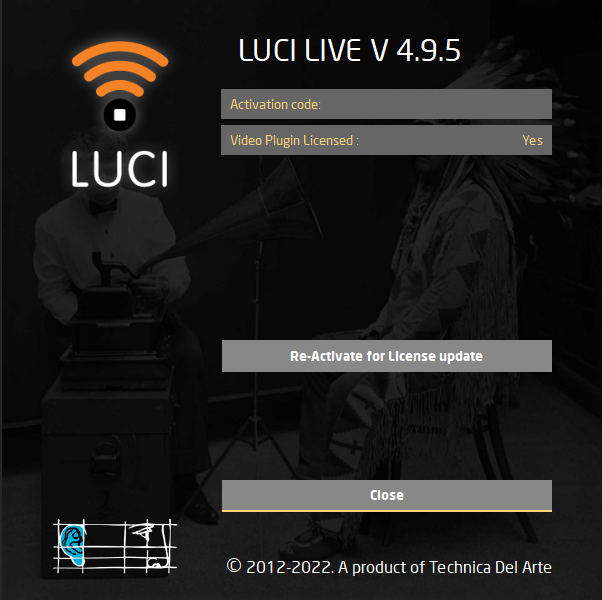 After finishing the purchase, press the “Re-Activate for License update” button and wait for a positive result. Now LUCI LIVE is ready to handle video.
After finishing the purchase, press the “Re-Activate for License update” button and wait for a positive result. Now LUCI LIVE is ready to handle video.
Select Video Input
First Setup the video input by selecting the menu > ‘Select Video…’ item.
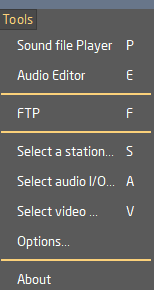
The window will show the installed video devices either by System drivers or Blackmagic drivers ( if installed ). Select the device, and the default Resolution and Frame rate of this device. Be aware that some video devices can only be used with one particular resolution or frame rate. If the video image is flipped there is an option to flip the image Vertical and/or Horizontal.
For using the NDI video as input, install the NDI Tools from their website, run the NDI Tools program and select the ‘NDI Webcam Input’, this will allow LUCI Live to receive the NDI video feed if selected.
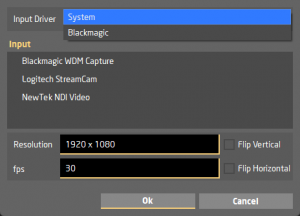
Set the Station profile to stream video
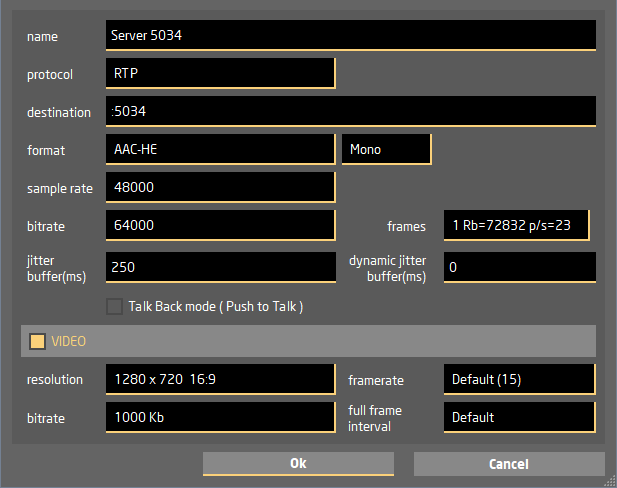 Protocol
Protocol
The only difference to a normal Audio profile is that you select the Audio/Video via RTP or Audio/Video via SC-RTP . This will stream the video signal through a second RTP stream on a different port (the audio port + 2):
destination
The RTP-port, in this example 5034, will be used for Audio. The video will be send as a separate stream through a second port (the audio port + 2) . For this example the Video-port will be 5036.
The numbering of the Video -port is selected internally in the software as always being 2 more than the Audio-port. Be sure this port is also port-forwarded in your router ( see LUCI STUDIO How-To: UDP port forwarding for RTP incoming stream ).
format
There is no restriction to the Audio Output formats as this is send through a different stream. All Audio formats can be used in combination with the Video option.
Video
To stream video select this option, to set the desired resolution, frame rate… The settings chosen here depends on the capabilities of the receiving end, and can therefore differ per station.
resolution
The number of pixels ( points ) a video frame (picture ) is made up. The first number defines the horizontal pixels, the second the vertical. The default resolution is the one set in the above Video input window. If your receiving end is not capable of receiving this resolution, you an select a different one.
framerate
The number of frames (pictures) per second that is send. The higher the frame rate the smoother the transitions will be. The default frame rate is the one set in the above Video input window. If your receiving end is not capable of receiving this frame rate, you an select a different one.
bitrate
The number of video data bits per second that is send through the internet channel. The higher the bitrate the better the video quality, but your internet connection has to be able to handle this amount of data.
full frame interval
The h264 compression algorithm sends at every interval the data of one full frame ( picture ), and after that only the differences to the previous frame. If the interval is short, more data has to be send, but when the interval is long, any streaming error will result in a longer time of faulty video.
Showing the incoming video
 On pressing the Microphone button, a separate video preview window is shown, where the video input signal will be shown. The size of the window can be changed, or set to the selected resolution ( maximise ). When pressing the Connect Button, the audio and video will be send by separate RTP streams.
On pressing the Microphone button, a separate video preview window is shown, where the video input signal will be shown. The size of the window can be changed, or set to the selected resolution ( maximise ). When pressing the Connect Button, the audio and video will be send by separate RTP streams.
Recording the video
The video input can be recorded just as the audio into separate files. The audio in a wav file and the video in a mp4 ( audio less ) file. To combine the 2 files you can either use a 3e party Video Editing Suite, or use our FTP function.
Editing the video
Audio and video are saved in 2 separate files. To combine the 2 files you can either use a 3e party Video Editing Suite, or publish it using our “FTP” or “Render” function. Before publishing the file you can set a start and end point with the LUCI LIVE Editor. When using “FTP” the new audio file and a video with the audio combined are send to the FTP-server. When using “Render” a new audio file is created with a video combined with the audio is created ( auto named “_final” ).
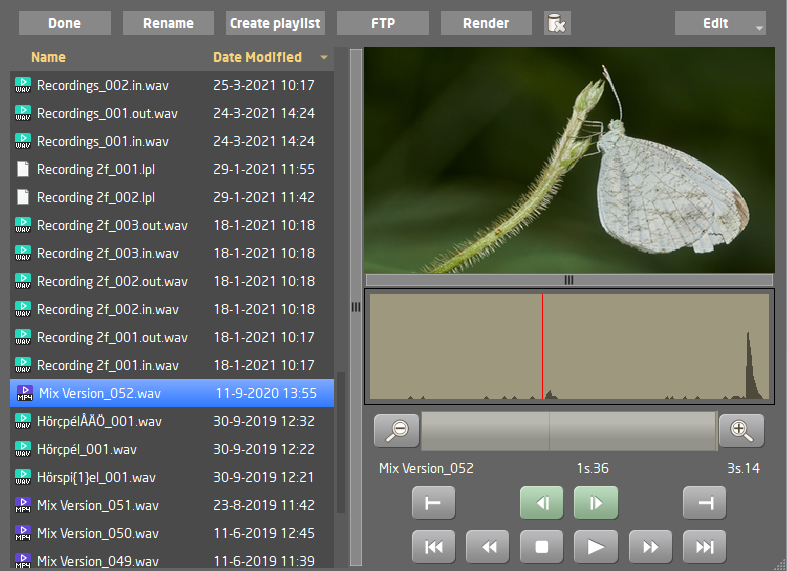 You will only see the audio file in the file list, but if there is a mp4 file the video frame will be also shown on selection. There are some dragging bars you can move to size the video / audio areas. You can set a different begin and end point from the audio timeline ( see section Audio Editor). The selected area will be highlighted in the waveform screen and only this part of the file will be published. You can publish this selection with FTP.
You will only see the audio file in the file list, but if there is a mp4 file the video frame will be also shown on selection. There are some dragging bars you can move to size the video / audio areas. You can set a different begin and end point from the audio timeline ( see section Audio Editor). The selected area will be highlighted in the waveform screen and only this part of the file will be published. You can publish this selection with FTP.
Synchronization problems
A known difficulty is the synchronization of the audio and video streams / files. As they are captured separately, the synchronization depends on the capturing latency of the audio versus the video frames and can cause some unwanted synchronizing delay. For instance, if you use a webcam as video input and a different audio input for audio instead of the webcams microphone, then the delay could be noticeable. Therefore it is best to use a 3th party video editor to combine the 2 separate files so you can shift the audio and video in time to synchronize it.
